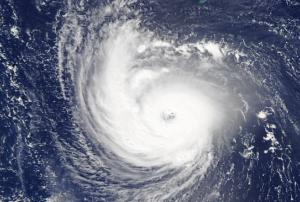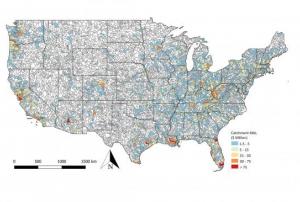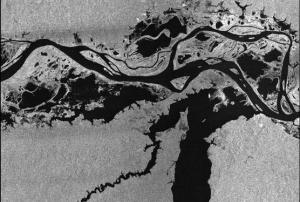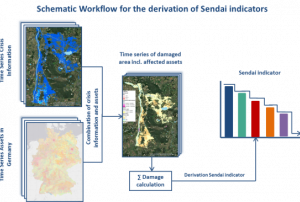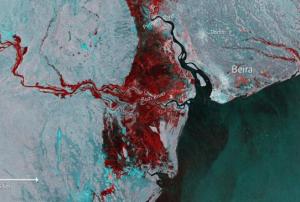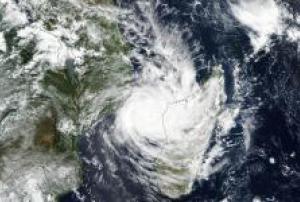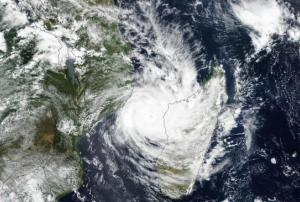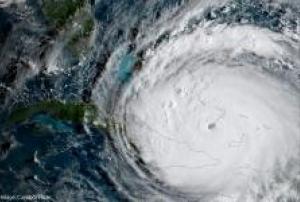Tormenta severa
Definition
Facts and figures
Further information
UN-SPIDER Regional Support Offices with hazard-specific expertise
Related content on the Knowledge Portal
- Tropical Cyclones stalling along the North Atlantic coast lead to more rain in the confined location
According to a new study by scientists from NASA and NOAA, tropical cyclones stall more frequently and stay longer near the coastline. This potentially leads to more precipitation over confined locations and thus an aggravation of tropical cyclone hazards for coastal populations.
In the new study, scientists Hall and Kossin examined all tropical cyclones from 1944-2017 in the National Hurricane Center's HURDAT2 database to analyze the position and calculate the average forward speed of each storm that has reached the coastal regions and to investigate the direction of the storm track. They found that 66 storms in the North Atlantic stayed in a coastal region for more than two days. Almost half of these 66 stalls appeared in the last third of the 74 years they analyzed, while only 17 appeared in the first third. In addition, they found that long-lasting storms were more likely to contain meanders.
The trajectory of a tropical cyclone...
read more04/07/2019 A recent study, published in the Water Resource Research journal, presents a new method for a spatially realistic national flood risk assessment.
Researchers expanded an existing statistical model, based on U.S. Geological Survey (USGS) river flow data, to simulate a thousand years of potential flood events. By calculating the damage for each event in dollars, they were able to estimate the probability of the United States suffering particular annual flood damages.
Traditional risk flood analysis models assume that the impacts on the entire flood-affected area are the same, but flooding can be more severe in some areas than in others, even during the same flood event. At national scales, traditional risk analyses can only estimate the average annual loss. To estimate the total annual losses that might occur in more extreme flooding...
read more04/07/2019In the past year, “there were 315 natural disaster events recorded with 11,804 deaths, over 68 million people affected, and US$131.7 billion in economic losses around the world.” This is according to the Centre for Research on the Epidemiology of Disasters (CRED) in its recently released 2018 Natural Disasters Report.
While these 2018 natural disaster values represent a decrease when compared with the annual averages from 2008 to 2017, some geographic areas still experienced great losses of life and damages due to natural hazards. Indonesia was most adversely impacted in terms of lives claimed, with earthquakes in August and September 2018 that left a total of 4,904 people dead or missing, according to the CRED. Earthquakes also accounted for the greatest number of deaths among natural disasters worldwide in 2018. And among all types of natural hazards, floods affected the greatest number of people during the...
read more01/07/2019- Publishing institution:
To meet the global challenges, the United Nations adopted several framework agreements, including the Sendai Framework for Disaster Risk Reduction at the Third United Nations World Conference on Disaster Risk Reduction (2015-2030). The framework builds the international reference point for disaster preparedness and focuses on reducing existing and future disaster risks as well as enhancing disaster resilience. In the Sendai framework, seven global targets have been agreed to measure global progress in implementing the framework through quantifiable indicators and to present, compare and evaluate the status and progress uniformly worldwide. The recording of the status and degree of target achievement using the agreed indicators requires the use of various data sources, which must be consistent and comparable in time and space in order to ensure global monitoring.
Publishing institution:Millions of people in Mozambique, Malawi and Zimbabwe are struggling to cope with the aftermath of Cyclone Idai, which has swept through this part of southeast Africa over the last weeks, leaving devastation in its wake. It is thought that more than two million people in the three countries have been affected, but the extent of destruction is still unfolding.
The authorities and military are working to rescue people, but roads and other transport and communication links are cut off. In order to plan and execute this kind of emergency response it is vital to understand exactly which areas have been affected, especially as accessing people cut off is extremely challenging.
The disaster triggered activations of both the Copernicus Emergency Mapping Service and the...
read more04/04/2019The United Nations Office for Outer Space Affairs (UNOOSA), as part of the support it provides to Member States through its UN-SPIDER programme, has requested the activation of the International Charter "Space and Major Disasters" for monitoring the impact of Cyclone Idai in Zimbabwe, which hit the country's eastern provinces on 15 and 16 March. The Charter was activated on behalf of the United Nations Development Programme (UNDP) Zimbabwe country office.
Following its landfall in Mozambique on 14 March, Cyclone Idai continued across land with heavy rains and strong winds that...
read moreThe United Nations Office for Outer Space Affairs (UNOOSA), as part of the support it provides to Member States through its UN-SPIDER programme, has requested the activation of the International Charter "Space and Major Disasters" for monitoring the impact of Cyclone Idai in Zimbabwe, which hit the country's eastern provinces on 15 and 16 March. The Charter was activated on behalf of the United Nations Development Programme (UNDP) Zimbabwe country office.
Geospatial experts from UNDP in Zimbabwe will...
read more18/03/2019Understanding Risk (UR) Caribbean will be held from 27 May to 1 June 2019 at the University of the West Indies (UWI) Cave Hill Campus’ Errol Barrow Center for Creative Imagination. The event consists of three conference days of plenaries, technical sessions and cultural activities, followed by two days of workshops and side events. It provides space for multimedia exhibits and bilateral meetings.
Following the devastation caused by Hurricanes Irma and Maria in 2017 across the Caribbean, there has been increased emphasis on identifying, assessing and reducing disaster risk in the region. UR Caribbean will provide an informal platform for the public and private sectors, regional disaster risk management agencies, non-governmental organizations, multilateral development banks and donors across the Organization of Eastern Caribbean States, Caribbean Community, and Overseas Countries and Territories to:
- Identify gaps and needs that exist in disaster risk...

